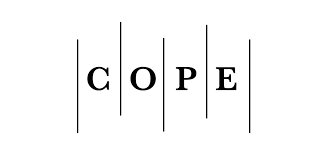Medical Image Segmentation with active contour and optimization Techniques: Survey
DOI:
https://doi.org/10.29304/jqcm.2022.14.4.1115Keywords:
Active Contours, Image Segmentation, Medical Image, Particle Swarm OptimizationAbstract
The principal aim is to improve medical diagnosis through segmented images. Thus, medical image segmentation become one of the key technologies in computer-aided diagnosis. Active contours, or snakes, have been widely used for image segmentation purposes. However, high noise sensitivity and poor performance over weak edges are the most acute issues that hinder the segmentation accuracy of these curves, particularly in medical images. To overcome these issues, a novel external force that integrates gradient vector flow (GVF) field forces and the traditional snake function is proposed in this research. In addition, a novel technique is applied to limit the boundary of the initial contour by set four initial points around the medical issue and then connecting them by polynomial curves. Moreover, the positive effect of Particle Swarm Optimization (PSO) on calculating the final active contour area and its percentage to the entire image area is proved in this work.
Downloads
References
[2] K. Benhamza and H. Seridi, “Intelligent Cooperative Method for Medical Image Segmentation,” in International Conference on Electrical Engineering and Control Applications, 2019, pp. 1221–1231.
[3] N. Siddique, S. Paheding, C. P. Elkin, and V. Devabhaktuni, “Skarbek W, Koschan A, Bericht T, Veroffentlichung Z, others. Colour image segmentation-a survey. Published online 1994.,” Ieee Access, vol. 9, pp. 82031–82057, 2021.
[4] H. P. Ng, S. H. Ong, K. W. C. Foong, P.-S. Goh, and W. L. Nowinski, “Medical image segmentation using k-means clustering and improved watershed algorithm,” in 2006 IEEE southwest symposium on image analysis and interpretation, 2006, pp. 61–65.
[5] S. Kazemifar et al., “Segmentation of the prostate and organs at risk in male pelvic CT images using deep learning,” Biomed. Phys. Eng. Express, vol. 4, no. 5, p. 55003, 2018.
[6] X. Zhang, “An Improved Active Contour Model in Medical Image Segmentation,” J. Phys. Conf. Ser., vol. 1345, no. 2, 2019, doi: 10.1088/1742-6596/1345/2/022053.
[7] X. Chen, B. M. Williams, S. R. Vallabhaneni, G. Czanner, R. Williams, and Y. Zheng, “Learning active contour models for medical image segmentation,” Proc. IEEE Comput. Soc. Conf. Comput. Vis. Pattern Recognit., vol. 2019-June, pp. 11624–11632, 2019, doi: 10.1109/CVPR.2019.01190.
[8] V. Voronin, O. Balabaeva, S. Tokareva, E. Semenishchev, and V. Dub, “Medical image segmentation using modified active contour method,” Serbian J. Electr. Eng., vol. 14, no. 3, pp. 401–413, 2017, doi: 10.2298/SJEE1703401V.
[9] C. Huang, D. Lei, and Z. Li, “Active contour model for medical sequence image segmentation based on spatial similarity,” Digit. Med., vol. 5, no. 2, p. 85, 2019, doi: 10.4103/digm.digm_11_19.
[10] H. Zhang and X. Xie, “Medical Image Segmentation Using Magnetostatic Active Contours (MAC) with Tensor Diffusion,” Med. Image Underst. Anal., pp. 125–130, 2012.
[11] M. Talebi, A. Ayatollahi, and A. Kermani, “Medical ultrasound image segmentation using genetic active contour,” J. Biomed. Sci. Eng., vol. 04, no. 02, pp. 105–109, 2011, doi: 10.4236/jbise.2011.42015.
[12] T. Liu, H. Xu, W. Jin, Z. Liu, Y. Zhao, and W. Tian, “Medical image segmentation based on a hybrid region-based active contour model,” Comput. Math. Methods Med., vol. 2014, 2014, doi: 10.1155/2014/890725.
[13] K. V Mahesan, S. Bhargavi, and D. Jayadevappa, “Segmentation of MR Images using Active Contours: Methods, Challenges and Applications,” Int. J. Innov. Res. Adv. Eng., vol. 4, no. 02, pp. 13–21, 2017, [Online]. Available: www.ijirae.com
[14] J. Chen and E. C. Frey, “Medical Image Segmentation via Unsupervised Convolutional Neural Network,” 2020, [Online]. Available: http://arxiv.org/abs/2001.10155
[15] F. P. An and J. E. Liu, “Medical Image Segmentation Algorithm Based on Optimized Convolutional Neural Network-Adaptive Dropout Depth Calculation,” Complexity, vol. 2020, 2020, doi: 10.1155/2020/1645479.
[16] A. Niaz et al., “Inhomogeneous image segmentation using hybrid active contours model with application to breast tumor detection,” IEEE Access, vol. 8, pp. 186851–186861, 2020, doi: 10.1109/ACCESS.2020.3029333.
[17] C. Hong, Y. Xiaosheng, W. Chengdong, and W. Jiahui, “An active contour model for brain magnetic resonance image segmentation based on multiple descriptors,” Int. J. Adv. Robot. Syst., vol. 15, no. 3, p. 1729881418783413, 2018.
[18] J. M. D. Barbosa, T. L. G. M. Nunes, T. L. G. M. Nunes, A. C. R. Neto, and E. Morya, “Semi-automatic active contour-based segmentation to remove eyes, meninges, and skull from MRI,” Res. Biomed. Eng., vol. 36, no. 3, pp. 369–377, 2020, doi: 10.1007/s42600-020-00066-8.
[19] C. Feng, J. Yang, C. Lou, W. Li, K. Yu, and D. Zhao, “A Global Inhomogeneous Intensity Clustering- (GINC-) Based Active Contour Model for Image Segmentation and Bias Correction,” Comput. Math. Methods Med., vol. 2020, 2020, doi: 10.1155/2020/7595174.
[20] M. Zhang, B. Dong, and Q. Li, “Deep active contour network for medical image segmentation,” in International Conference on Medical Image Computing and Computer-Assisted Intervention, 2020, pp. 321–331.
[21] A. Ben Rabeh, F. Benzarti, and H. Amiri, “Segmentation of brain MRI using active contour model,” Int. J. Imaging Syst. Technol., vol. 27, no. 1, pp. 3–11, 2017.
[22] K. Cheng, T. Xiao, Q. Chen, and Y. Wang, “Image segmentation using active contours with modified convolutional virtual electric field external force with an edge-stopping function,” PLoS One, vol. 15, no. 3, pp. 1–14, 2020, doi: 10.1371/journal.pone.0230581.
[23] A. M. Hasan, “A hybrid approach of using particle swarm optimization and volumetric active contour without edge for segmenting brain tumors in MRI scan,” Indones. J. Electr. Eng. Informatics, vol. 6, no. 3, pp. 292–300, 2018.
[24] R. Li, Y. Guo, Y. Xing, and M. Li, “A novel multi-swarm particle swarm optimization algorithm applied in active contour model,” in 2009 WRI Global Congress on Intelligent Systems, 2009, vol. 1, pp. 139–143.
[25] W. Xu, X. Yue, Y. Chen, and M. Reformat, “Ensemble of active contour based image segmentation,” in 2017 IEEE International Conference on Image Processing (ICIP), 2017, pp. 86–90.
[26] D. Mandal, A. Chatterjee, and M. Maitra, “Robust medical image segmentation using particle swarm optimization aided level set based global fitting energy active contour approach,” Eng. Appl. Artif. Intell., vol. 35, pp. 199–214, 2014.













